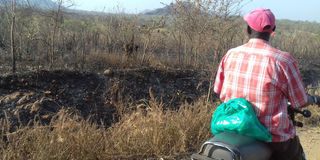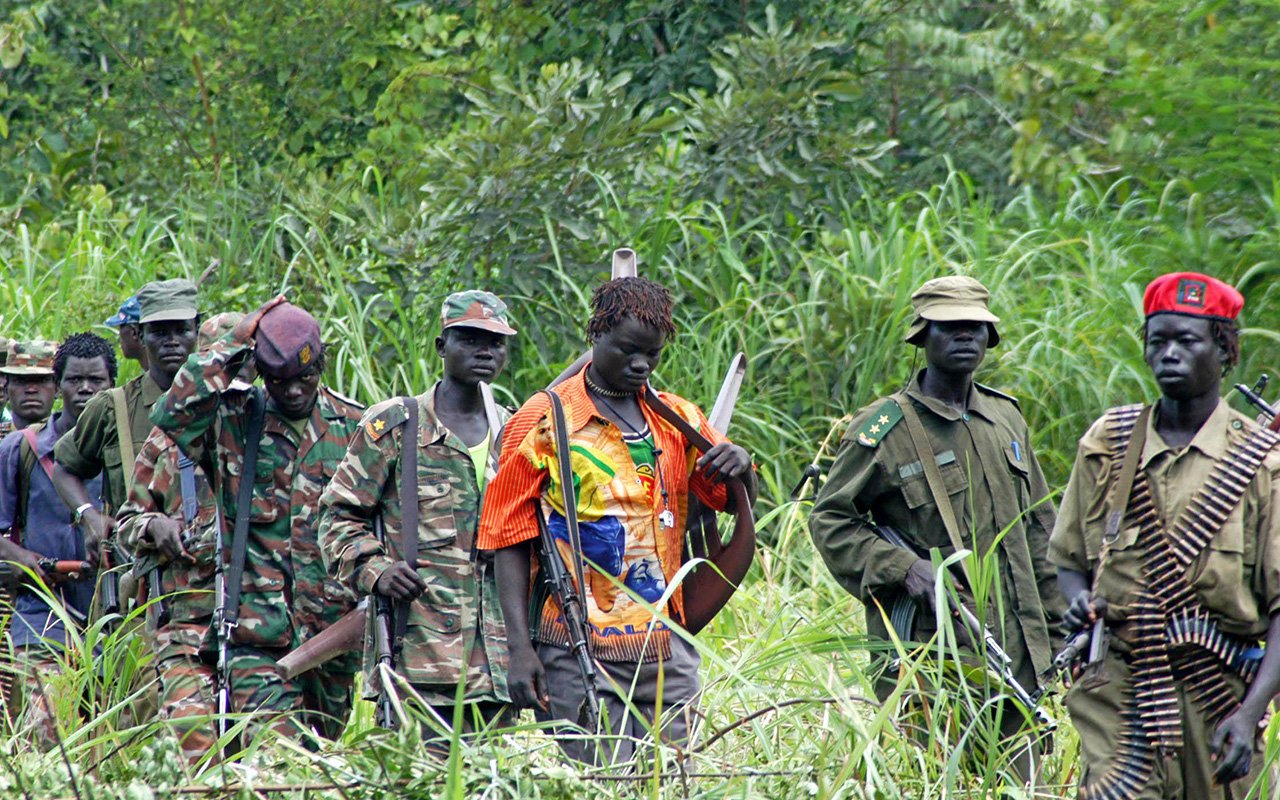Bush burning exposes Moyo, Obongi to hunger, drought

A motorcyclist looks at a section of a burnt bush in Uleppi Sub-county, Madi-Okollo District recently. Bush burning is a common practice in the area every year. PHOTO/FELIX WAROM OKELLO
What you need to know:
- The cyclic nature of fires in the district is evidence of increasing climatic instability and changes in vegetation cover.
Indiscriminate bush burning is affecting animal and crop production in Obongi and Moyo districts.
Bush burning has become a culture across the West Nile Sub-region, especially during the dry season. As a result, several hectares of land with crops and grass for animals are burnt.
Mr Michael Koma, a resident of Oyajo Village in Moyo Sub-county, Moyo, said on Tuesday that bush burning should be regulated because it destroys the environment.
“We have lost some bird species because of the bush burning. We cannot continue to burn the nests of the birds and other animal species. Equally, the food left in the garden such as cassava is always burnt. This causes food insecurity,” he said.
Some of the locals say the bushes are burnt to encourage the growth of pastures.
Ms Elizabeth Amen, the Obongi District tourism officer, said bush burning is often done intentionally to clear ground in search of animals for bush meat.
“The bush burning acts have devastated the tourism sector in the region in very many ways. We have a lot of bird species in the West Nile region, but some are now extinct. People disregard the impact it brings but the variety of animal species are affected,” she said.
“When there is bush burning, the animals find their way out of the den. The smoke makes them uncomfortable to stay, meaning the bush burning makes the bird species that we have around find another location,” she added.
Mr Patrick Drama, the Moyo District natural resources officer, said the cyclic nature of fires in the district is evidence of increasing climatic instability and change in vegetation.
“Because of the persistent fires, tall vegetation has given way to shrubs. These species suppress the production of accessible and palatable forage and affect the animal production and also put the life of our bird species at risk,” he said.
He added that other semi-arid areas of the region found in the cattle corridor of Adjumani and Yumbe districts also experience extensive bush burning and wind erosion during the dry season. The bush burning also affects the electricity supply because the poles get burnt in the process. Two weeks ago, West Nile Rural Electrification cut off the power supply because electricity poles were burnt in areas of Madi-Okollo District due to wildfires.
The phenomenon needs to be curtailed by the authorities before it gets out of hand. Hunting thrives in Madi-Okollo in Arua, Odravu in Yumbe, and Alwi in Nebbi.
On the way from Moyo up to Pakwach District, during dry seasons, it is evident that huge chunks of land are seen burning. Some of the fires extend to burn people’s houses and trees that are planted for commercial purposes.
Looming Dangers
It causes biological effects such as sterilisation (or death of living tissue) within the soil. Higher soil temperatures (greater than 100ºC) may alter soil chemical structure, changing the amounts and availability of nutrients such
as nitrogen, phosphorus, and ammonia. These soil changes, combined with ash from the fire, may cause an ash-bed effect, increasing the fertility of the soil. However, these nutrients are relatively soluble and may be rapidly washed from the site by rain.




